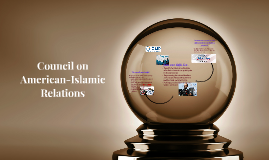Council Presentation
Transcript: Denver International Airport Multiple pieces in multiple places Baggage Claim: Interactive Kiosk Visitors Center: YUM! Guide Terminal A & B: Visitors Guide Visitors Guide All 11 Welcome Centers across the state First ever published for the city Sales & Marketing Budget Unique Events “So, this program with Visit Aurora is a win-win for us – it’s a great way to reach all the patients to which they have access.” -Bailey Huslander, Marketing and Public Relations Manager, Medical Center of Aurora on Destination Healthcare in the Denver Business Journal AURORA AROUND COLORADO By The Numbers “As the Welcome Center directly east of you on I-70 we send approx. 2/3 of our 200,000 people to Denver and directly to Aurora.” – Colorado Welcome Center, Burlington 2013 ($550,000 Budget) 57% of budget spent on sales/marketing 11% of budget spent on bid fee/event funding Marketing: $250,000 (Advertising purchases, digital marketing, destination brand/campaign) Sales: $58,700 (Tradeshows, lead memberships, direct marketing materials) Events: $62,000 (Bid fees, event funding/sponsorships) 2016 ($800,000 Budget/Additional $250,000) Marketing: $100,000 (Digital marketing, healthcare marketing, social production) Sales: $100,000 (Lead development service, additional tradeshows, direct recruitment, staffing) Events: $50,000 (Dedicated to attracting signature event/bid fees) •Aurora All Sports Show •Colorado River Outfitters Annual Conference and Tradeshow •9/11 Freedom Rally •Repticon 2013, 2014 •USA Boxing Junior State Tournament •USS Floyd B Parks Reunion •Nuclear Weapon Technicians Association •US Club Soccer National Cup •Senior Softball Western Nationals •Genghis Con XXXIV •Costume-Con •Steubenville of the Rockies •Elite Club National League Soccer Championship •American Cichlid Association •Briard Club of America •2014 World Powerlifting Championship •2014 US Lacrosse U15 National Championship •2015 Colorado Police and Fire Games Colorado DMO Budgets “If not for Visit Aurora, our event would not be in Aurora and returning multiple years,” – Sarah Kate Noftsinger, Elite Clubs National League Commissioner 105 leads have gone out in 18 months Leads represent 98,509 new room nights Of 18 events recruited by Visit Aurora over past 12 Months, seven have become recurring VisitAurora.com over the last 18 months Website Views: 51,779 Direct Booking Views: 10,750 Visitor Requests: 350 Denver Colorado Springs Estes Park Grand Junction Steamboat Durango Boulder Aurora $14,000,000 $3,500,000 $2,500,000 $2,400,000 $1,600,000 $954,850 $700,000 $550,000

















